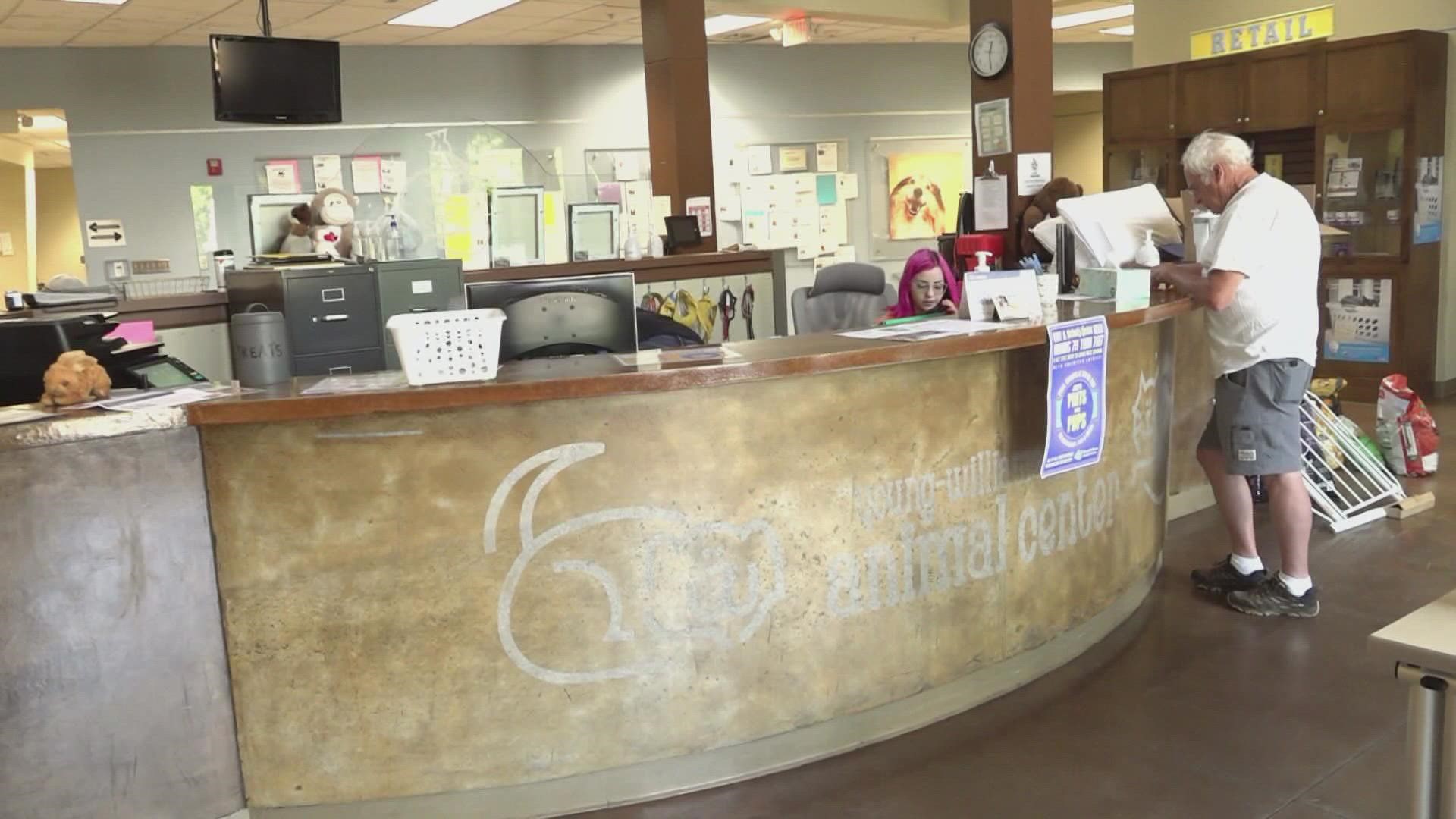KNOXVILLE, Tenn. — In emails between the Knox County Sheriff's Office Animal Control Division and the Knox County District Attorney General's office, animal control officers had concerns about Young-Williams Animal Center adopting animals with behavioral issues.
Animal control officers wrote about one case, where an animal was deemed a "dangerous dog" by a court, surrendered to Young Williams, and then adopted to another family.
The county's "dangerous dog" ordinance requires a judge to make that designation but does not forbid Young-Williams from adopting the dog out to another person.
"Young-Williams Animal Center follows all laws and policies regarding DD1 animal designations," the shelter said in an email response. "If an animal is considered behaviorally rehabilitated or requiring a different home environment, but does not require euthanasia, our shelter will work to find that animal a suitable owner."
In another situation, officers wrote about a dog named Baxter, who was surrendered to Young-Williams after "4 bites to children" in June 2021. Later that month, another family adopted Baxter, but returned him in July 2021, the emails showed.
Young-Williams staff then decided only to adopt Baxter to a home without children. He was adopted out again, and in September animal control was called to the new owner's home for a "vicious dog attack," animal control officers said in the email.
They said the owner needed 40 stitches from the attack. Animal control asked for a court order to euthanize the dog, and he was euthanized.
Young-Williams CEO Janet Testerman said the shelter will not euthanize dogs just because they have bitten someone or they are declared "dangerous dogs" by the legal definition.
"We want to evaluate that pet," Testerman said. "We don't know the circumstances of why it might happen. Was it provoked? Was it a child that pulled a dog's tail?"
However, Testerman said every adopter is told about the animal's past and any behavioral issues arising in the shelter.
Angela Huskey said her dog, Lady, was skittish at first, then started showing resource-guarding behaviors. Lady bit Husky on her leg and on her hand, and Huskey had to go to UT Medical Center.
"I don't really feel like she was evaluated properly," Huskey said.
Huskey said when she called and spoke with one of the behavioral team members at YWAC, they said Lady may have shown some resource-guarding behaviors at the shelter.
"I feel like that could have been told to me," Huskey said.
Samantha Hudson said she adopted her dog from Young-Williams last year. She said her dog immediately started acting aggressively. Hudson said she called the shelter, and the behaviorist told her the dog only lasted two minutes in doggy playtime, probably because of aggressive behavior.
"The only thing they told me was she was skittish around men," Hudson said.
Testerman said the shelter tries its best to evaluate every animal who comes in its doors.
"The majority of these animals are coming to us as strays or lost," Testerman said. "We do not have the backstories on the majority of these animals."
She said her behavior team has six members and is working with about 50 animals at any given time, though the shelter is a stressful environment for pets.
Out of nearly 6,500 animals adopted, the shelter said less than 10% were returned for a variety of reasons, not just behavior.
Young-Williams' full responses to concerns outlined by animal control officers are below.
On euthanasia for bite dogs
When a pet is surrendered on a bite report, the shelter is then responsible for the pet’s outcome. Per best practices in our industry, Young-Williams Animal Center has a Review Committee comprising veterinary and medical staff, behavioral staff and other experts. This group evaluates each case as the pet arrives to determine the best course of action and whether the animal could enter rehabilitation and adoption, could be helped at a rescue organization or requires euthanasia.
In some cases, a pet with behavioral issues may still be able to live a fulfilling life and bring joy to an adopter. We frequently hear from people who are happy to take on the responsibility for complex care of that pet and thus save its life.
For every dog with known behaviors, we share all information and specific needs with the adopter before they complete the adoption contract. The adopter signs a very specific document detailing all of the dog’s needs. For example, this may include restrictions that require the pet to be kept away from children or other pets, to be on a specific regimen of medical care, or to be fed and cared for in a way that avoids behavioral triggers.
Our team guides each adopter to pets that might be suitable for them and is careful to share the extra effort and care needed for pets with known behaviors at every step of the adoption process.
On court-designated "dangerous dogs"
When an animal has a bite report, Animal Control defines whether the dog is not classified as dangerous, or is classified as DD1 or DD2. DD1 includes dogs that have bitten and caused no injury, or minor injury.
Young-Williams Animal Center follows all laws and policies regarding DD1 animal designations. The shelter has never placed a DD2 animal for adoption. If an animal is considered behaviorally rehabilitated or requiring a different home environment but does not require euthanasia, our shelter will work to find that animal a suitable owner. Every adopter reviews the specific medical and behavioral history of the dog prior to adoption, including but not limited to bite history, and would sign a waiver that they understand and want to care for that animal with the recommended behavior and training support.

